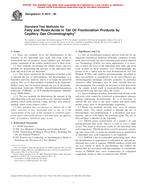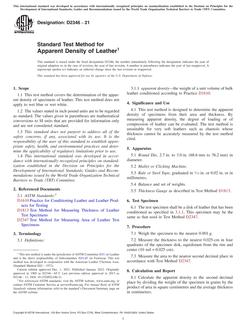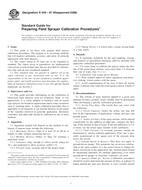1.1 This practice covers the evaluation of the performance of diffusive samplers of gases and vapors for use over sampling periods from 4 to 12 h. Sampling periods of such duration are the most common in workplace sampling. Given a suitable exposure chamber, the practice can be straightforwardly extended to cover samplers for use over other sampling periods as well. The aim is to provide a concise set of experiments for classifying samplers primarily according to a single numerical value representing sampler accuracy. Accuracy estimates refer to conditions of sampler use which are normally expected in a workplace setting. These conditions may be characterized by the temperature, atmospheric pressure, humidity, and ambient wind speed, none of which may be constant or accurately known. Futhermore, the accuracy accounts for the estimation of time-weighed averages of concentrations which may not be constant in time. Aside from accuracy, the samplers are tested for compliance with the manufacturer’s stated limits on capacity, possibly in the presence of interfering compounds. The samplers are, further, classified as to their capability for detecting situations in which sampler capacity may be exceeded.
1.2 This practice is an extension of previous research on diffusive samplers (1-13) as well as Practices D 4597, D 4598, D 4599, and MDHS 27. An essential advance here is the estimation of sampler accuracy under actual conditions of use. Furthermore, costs of sampler evaluation are reduced.
1.3 Furthering the latter point, knowledge of similarity between analytes of interest can be used to expedite sampler evaluation. For example, interpolation of data characterizing the sampling of analytes at separated points of a homologous series of compounds is recommended. At present the procedure of (9) is suggested. Following evaluation of a sampler in use at a single homologous series member according to the present practice, higher molecular weight members would receive partial validations considering sampling rate, capacity, analytical recovery, and interferences.
1.4 Units of the International System (SI) are used throughout this guide and should be regarded as standard.
1.5 This standard does not purport to address all of the safety concerns, if any, associated with its use. It is the responsibility of the user of this standard to establish appropriate safety and health practices and determine the applicability of regulatory limitations prior to use.
Product Details
- Published:
- 10/10/2001
- Number of Pages:
- 10
- File Size:
- 1 file , 150 KB


